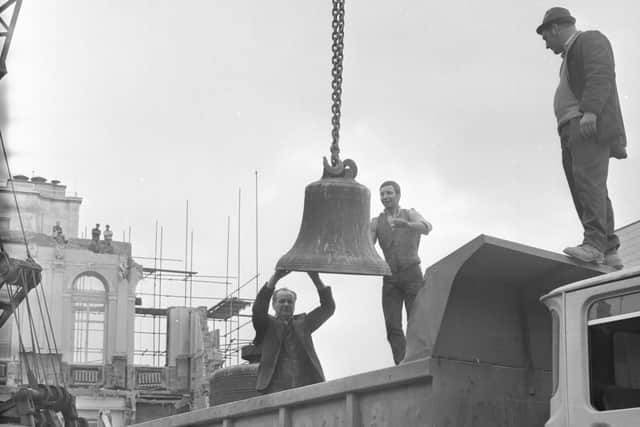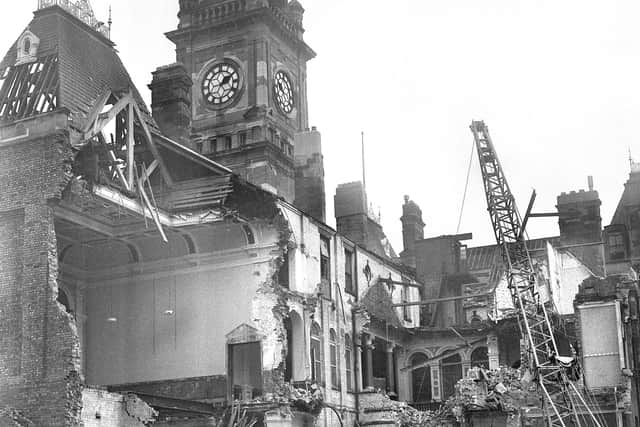Sunderland's old town hall bell being held in top secret location until decision made on its future
and live on Freeview channel 276
Sunderland’s old town hall bell has been moved to “secure storage” while city leaders consider proposals for its future.
The bell is one of the last remnants of the city’s old town hall, which was controversially bulldozed following the council’s move to a new civic centre in the early 1970s.
Advertisement
Hide AdAdvertisement
Hide AdWith Sunderland City Council’s recent move to multi-million-pound headquarters City Hall on the former Vaux site, questions have been raised about the town hall bell.


This includes whether it survived the move from the old civic centre at Burdon Road, which is currently being demolished to make way for housing.
At a full council meeting this week, it was confirmed that the town hall bell is safe and well.
However, city leaders stopped short of revealing its location, which remains top secret.
Advertisement
Hide AdAdvertisement
Hide Ad“I can confirm that following the closure of the civic centre and the ongoing regeneration of that site the council has moved the old town hall [bell] to a new secure storage location,” said councillor Graeme Miller, leader of Sunderland City Council.


“A number of options are currently being considered for the bell, however, and no decisions have yet been taken.
“Once we have made our mind up we will let the residents of the city know what we’re considering”.
The piece of Wearside’s civic history was put under the spotlight at the most recent meeting of Sunderland City Council on November 15, 2023.
Advertisement
Hide AdAdvertisement
Hide AdThis followed a public question which claimed the town hall bell had previously been stored in the council’s old civic centre car park.
The question asked where the bell is stored now and whether it would “outlive” the council’s “shining £2.5million-a-year City Hall as well”.
Labour leader of Sunderland City Council, Cllr Miller, said he welcomed the opportunity to call out the “cultural vandalism” of the old town hall’s demolition.
Cllr Miller told the meeting: “It’s great to be able to be given the opportunity to point out that one of the greatest acts of cultural vandalism that this city has ever suffered, was when the Tories tore down the town hall where that bell came from.
Advertisement
Hide AdAdvertisement
Hide Ad“Then [they] built a [civic] building that would only last for 50 years before it collapsed in on itself because of its poor quality.
“Yes, we now have a shiny new City Hall which everybody seems to quite like being in and it hopefully will be around for a long time.
“But I expect the bell will outlive them all”.
From 1835, Sunderland’s civic leaders originally met in the Exchange Building in High Street East, now the Quayside Exchange, but agreed to move to a larger base on Fawcett Street.
Advertisement
Hide AdAdvertisement
Hide AdThe town hall would officially open in 1890 with a construction cost that is equivalent to around £7million in today’s money.
In the 1960s the idea of a new venue was mooted and Sunderland Civic Centre was opened in 1970, with the town hall earmarked for demolition to make way for a new hotel.
Sunderland’s Planning and General Purposes Committee met on December 30, 1970, and gave the builders planning permission to do so.
The bell chimed for the last time on February 22, 1970, and the town hall was demolished, however, the hotel plans failed to progress as negotiations between builders and a national operator failed.
Advertisement
Hide AdAdvertisement
Hide AdPlans for another hotel also fell through in 1974 and despite previous efforts to find a hotel operator, no-one was ever found.
Years later the site became the building known for housing Virgin Money and the Post Office.